Saving papyrus
>> Tuesday, December 6, 2011 –
overwintering,
papyrus
Yesterday I wrote about saving some water plants, growing them inside the house under lights. Those were small plants -- today I tackle the big one: the papyrus. I actually had three large plantings of papyrus 'KingTut' this year because I was able to successfully overwinter a few plants last year. With that experience I'm going to experiment a little and should end up with lots of papyrus for next year -- plenty to share with neighbors.
The largest plant is in a large tub in the garage, and I won't do anything with it except water it once in a while -- I don't want it to grow in the garage, but I also don't want it to dry out. The plant I'll be dealing with today is the medium-sized planting -- it also was in a large container, but had a drainage hole so was drier than the other planting. Not ideal, but my goal was to see how it would do, and I think it did quite well.
Here's the plant:
I had already taken a division from this one a few weeks ago, and traded it for some canna rhizomes. Today I'll divide up the rest of it. Several of the stems are bent over from moving in and out of the garage, but that doesn't matter because...
The first step is to remove most of the stems:
I cut anything taller than about 3' (1m) or so. I probably could have cut everything down, but I'd prefer having some of the divisions with complete stems -- it's part of the experiment to see if they do better than the divisions that had no stems.
With most of the stems gone, I could focus on where to divide this. Some division points were obvious, like this section:
It was quite easy to cut out:
There was very little potting soil left here, as it was almost a solid mass of root fibers:
I still cut most of them off, and put it into a bucket of gravel -- like I did with the plants yesterday.
This happened to be a division with a stem that was not quite mature, so it fell under the height limit that would have gotten it cut down:
Then it was just a matter of cutting the remaining plant into pieces. Some of them were growing above the soil and had no roots at all:
There are plenty of root stubs though, which I assume will start growing as soon as they're submerged into the water:
I'll see what happens with it. If it doesn't root and dies, no big deal -- I love having lots of divisions so I can experiment!
After cutting off several chunks I was left with a decent-sized core plant:
My idea was to sink it into the pond to see if it would overwinter. The problem was...
Papyrus is quite buoyant, and the only way this thing was going to end up on the bottom of the pond was if I tied a brick to it -- and that was too much effort.
So I just separated it into smaller divisions:
Some of these I put into the gravel bucket that will go into the house under the lights, but the rest of the pieces went into another bucket that will spend the winter in the garage:
With very little light and cold temperatures I don't expect these to grow at all (like the full plant left in the tub), but if these all survive the winter I'll know that there's no need to overwinter a full plant next year. That will save me space and some effort -- one of these years I'd like to be able to park my car in the garage again.
So I've got a variety of different divisions of papyrus, some will remain semi-dormant in the garage, some will be grown under lights in the house. I don't know if every piece will survive the winter, but based on my success last year there's going to be a lot of papyrus in my neighborhood this summer.
.
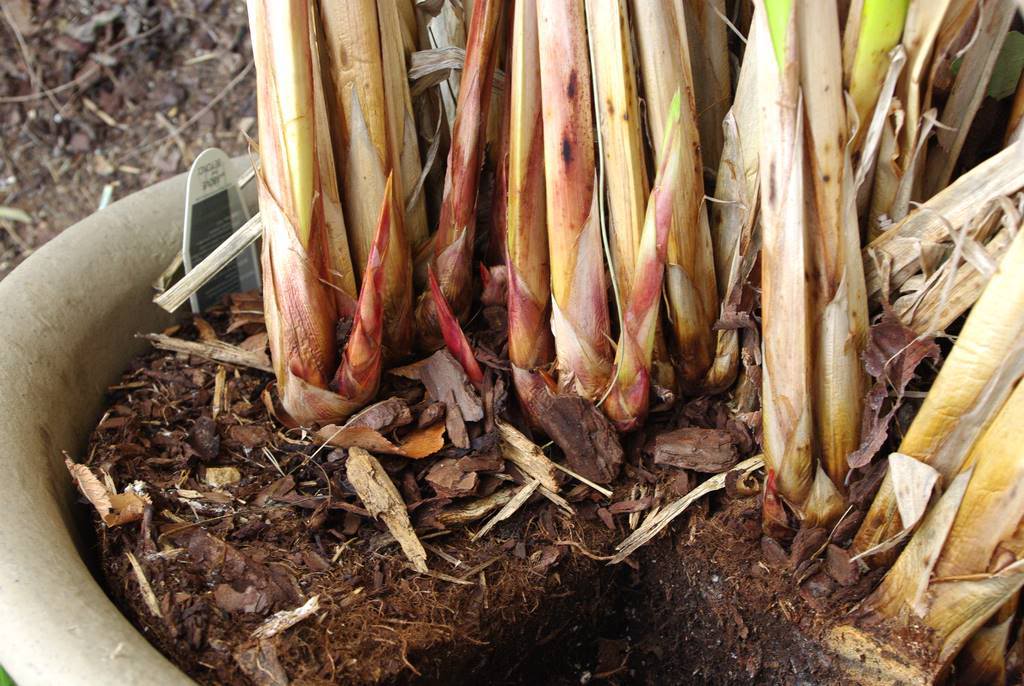
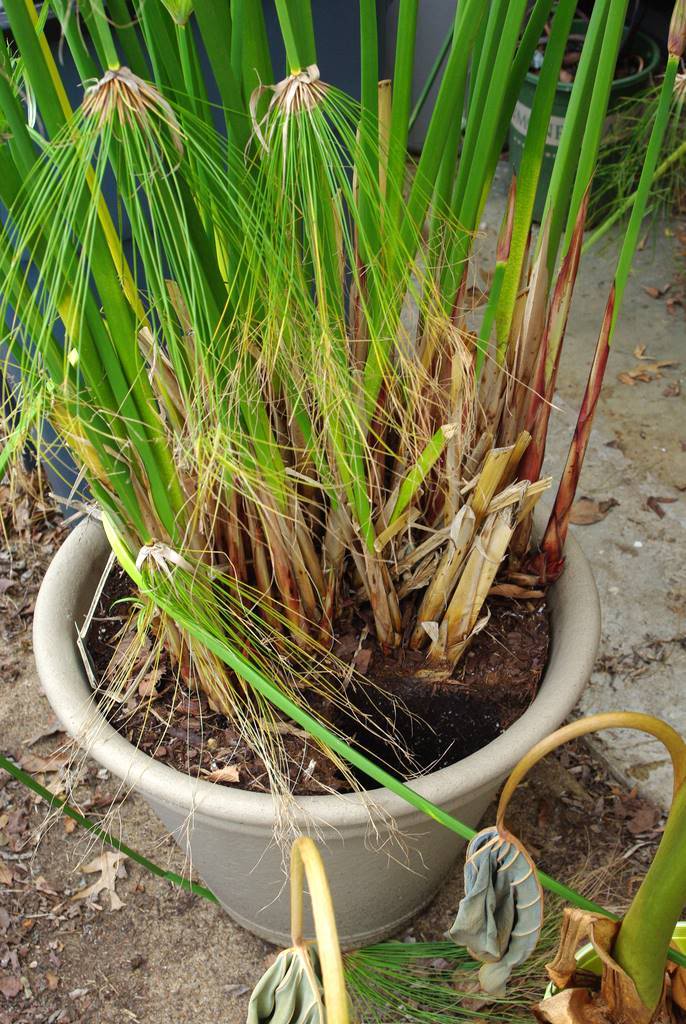

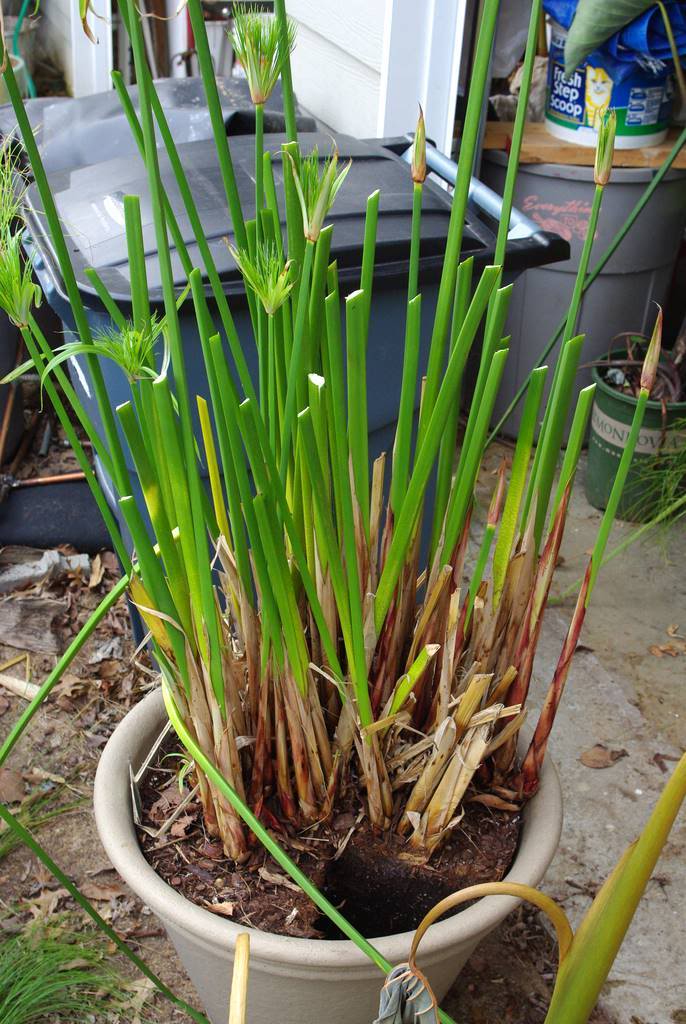


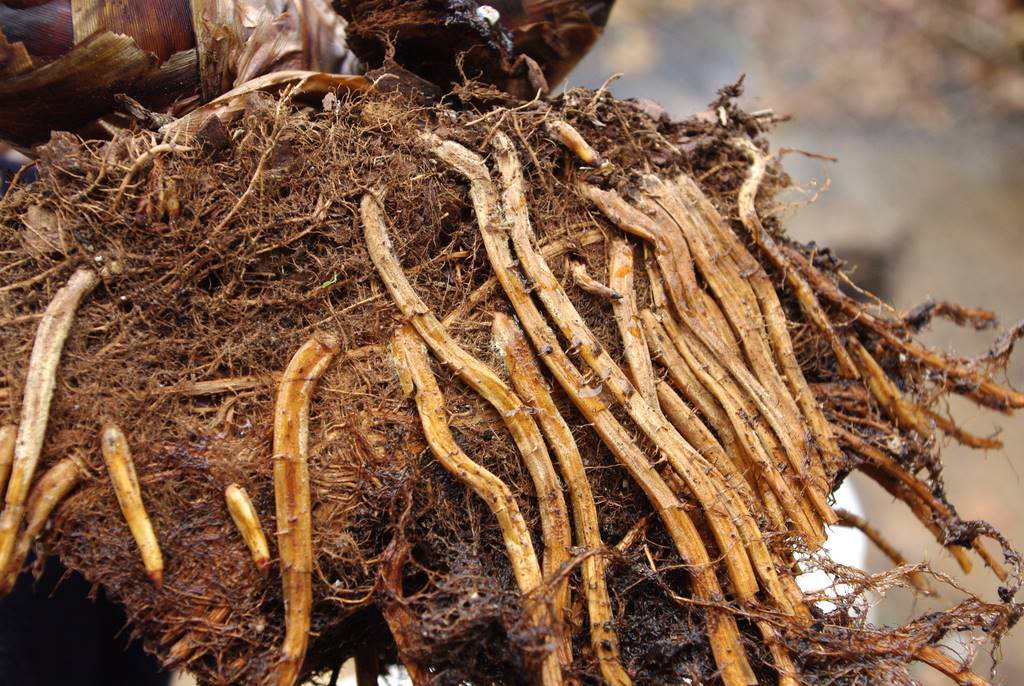
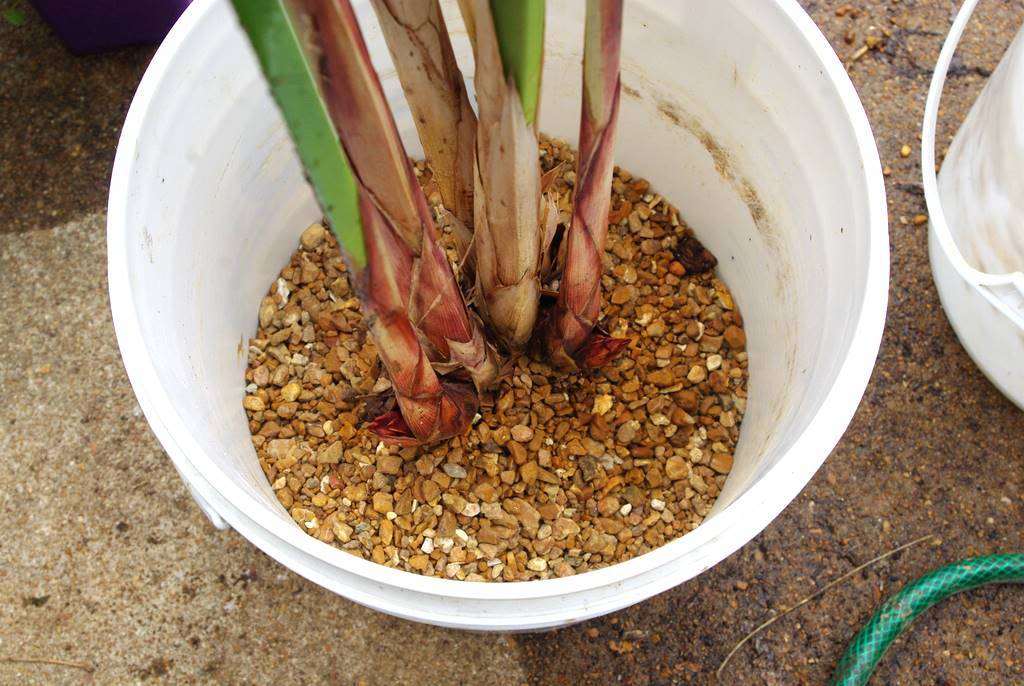


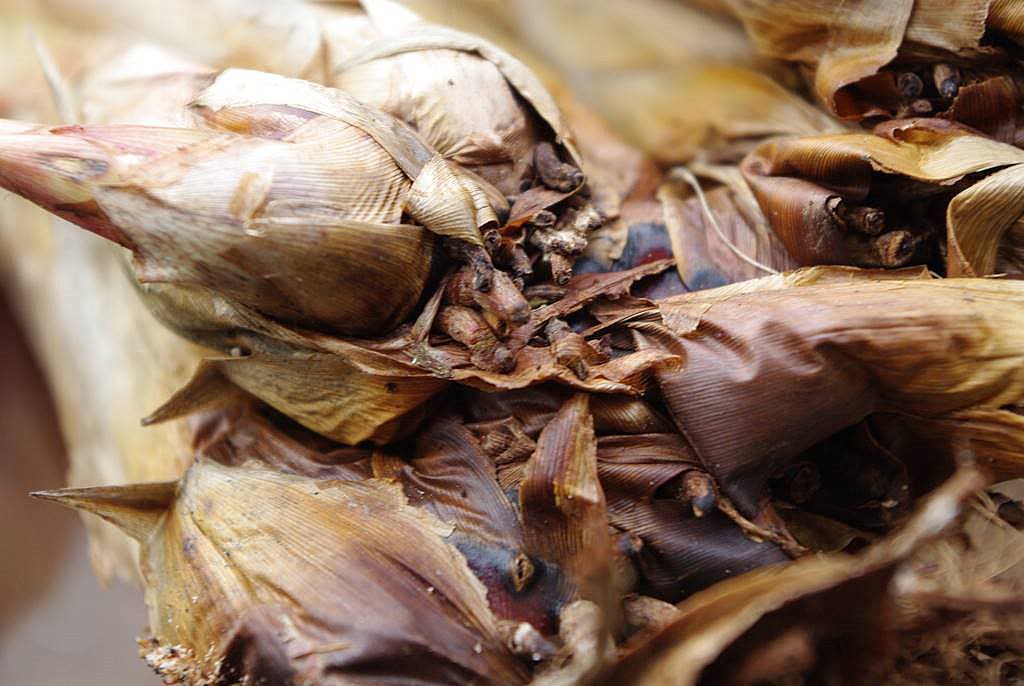

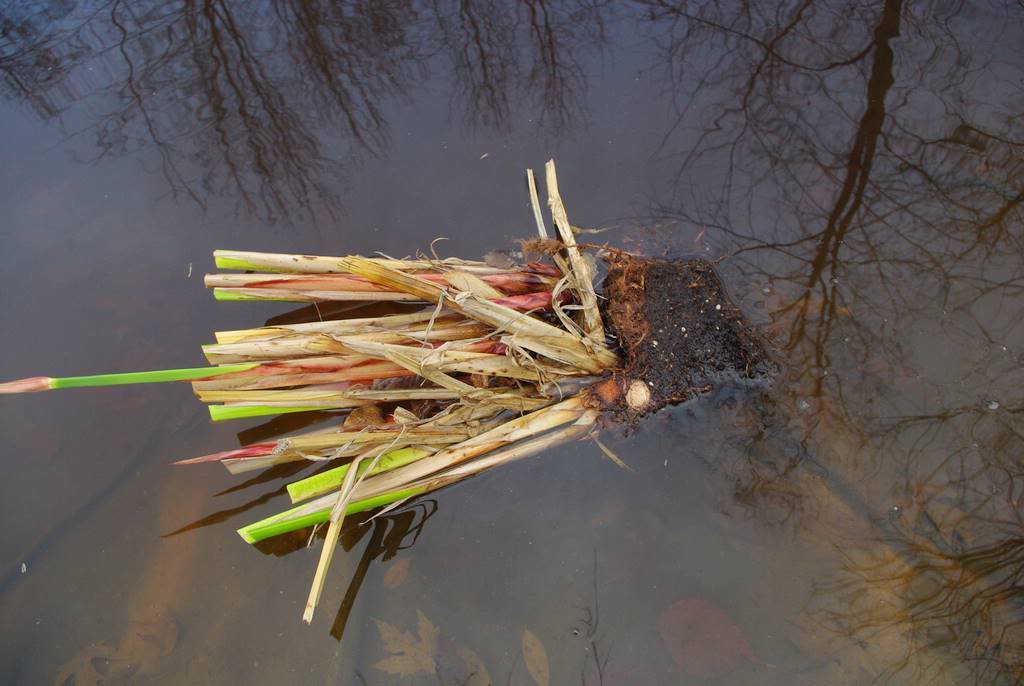

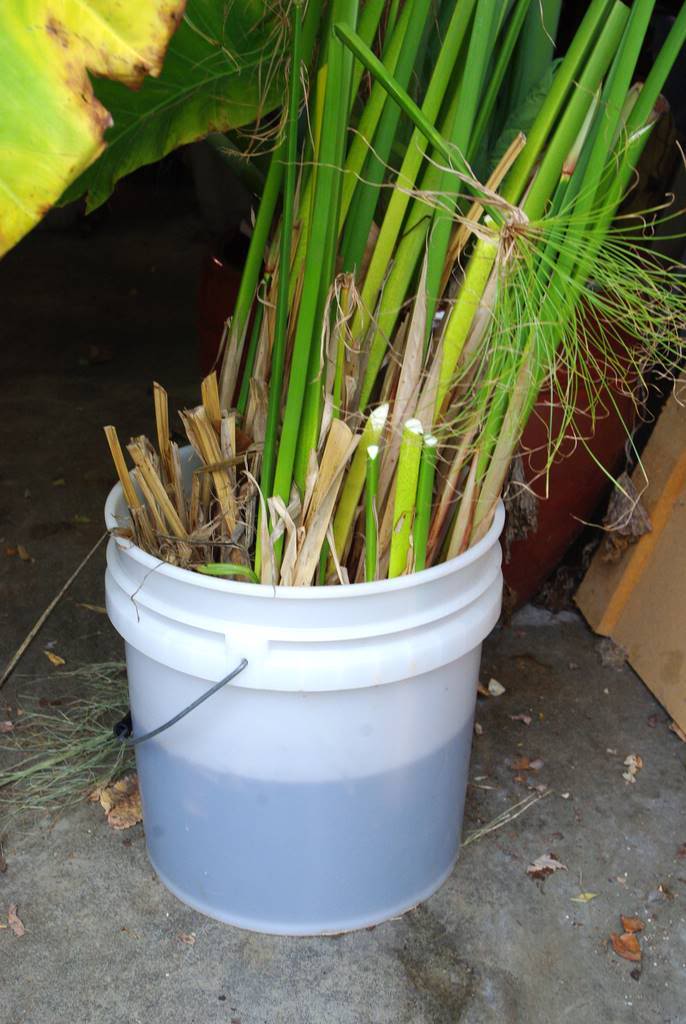




Excellent post. Papyrus is very tough from what I hear, and I bet most of the divisions will survive. You'll have plenty to give away next year.
Gerhard
:: Bamboo and More ::
I truley admire all the effort you put into over-wintering your plants! I look forward to seeing these around your pond next year!
I wish I would have read this post before I let my (much loved) Papyrus just perish in the cold. I never thought to take this route for overwintering!
Did you put water into the bucket with gravel? ( more specifically the bucket in the garage with no grow lights)
Anon: Yes! Water is key -- keep those roots wet all winter long!
so, how did the various papyrus survive? Did you decide on a best method for overwintering?
Unknown: The best method I've found over the six years since I've written this original post is to put them in a bucket of water in the garage over winter. It's key not to let them dry out. They don't seem to need much light, and they are around 40ºF all winter.
When do I set the overwintered starts back in the garden (zone 7)?
Great post! I'm a papyrus newbie and an office miscommunication may have killed my first subjects. My newly potted, indoor papyrus didn't get water for 3 days. The tops are mostly dried out but still semi-green. I submerged the pots overnight and cut off stalks that were "dwindling." Should I chop everything off like your picture above? Will the semi-green/soft fronds come back?
Thanks,
Scott
Hello. Was wondering how your King TUt Papyrus overwintered?
Casey -- overwintering went great every year as long as the roots stayed wet. The plants were semi-dormant so didn't need much light.